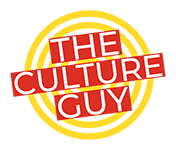This is Part 2 – Read Part 1 of our five part series
The great thing about moving to a more fluid rather than a balanced operating model (see last week’s post) is that it frees up a company from having to do the management heavy task of accounting for and controlling people’s time (the hours they “buy”) and they can allow people the freedom to deliver how the individual considers best. Personally, I work better from 7 am to 1 pm and then I need a long break but can do some of my best work between 6 pm and 9 pm. After 9 pm I’m done for though, so my phone and my emails go off.
So if we are not exchanging time for money, how do we measure the value of an employee to a company.
Well you need to choose a different metric. The only reason we have used time in the past is because when people worked factories they were needed to be there at specific times and different people did the same work at different times. In the knowledge economy, we have however moved beyond, but we are still using the same measurements. This is partly because time was a reasonable proxy for work completed and outputs delivered.
However, it was the outputs that we really wanted. It was the clients seen, calls made, accounts balanced, reports written, projects completed, code written, bugs fixed, problems solved that we were really paying for.
So let’s measure them. Let’s measure the actual deliverables rather than the time. What does it matter whether someone completes the work between 9am and 5pm or 4pm and 11pm, if we get the same results.
What’s more it’s easier to measure the outputs rather than the time when people are working remotely, and by giving me the space to manage my own time, an organisation gets better quality work and I get to connect with people when I want to, solving the mental health issues of isolation.
Don’t get me wrong, there are situations when prescribing time is needed – we have to be available to clients when they want; we have to gather a team together at specific times; but often people can be trusted to do the right thing at the relevant time, especially if they are motivated by the purpose and have the choice as to when or even whether they do the work or not.
I worked with one organisation who implemented unlimited holiday and fully flexible working times and both productivity and revenue went up, because if someone was at their desk, it was their choice, so they chose to do their job well. (People will often surprise you!)
Let’s be really though. There are also some people that will struggle with the freedom and lack of outside imposed routine. That’s OK too, maybe they need the option of coming into the office to do their best work. Nothing wrong with that. It’s all about choice and fluidity.
Choose the right metric and make life easier for you and your people.
Find out how well you’re doing on measuring productivity with the Free Culture Scorecard: Take the 5 minute assessment here



